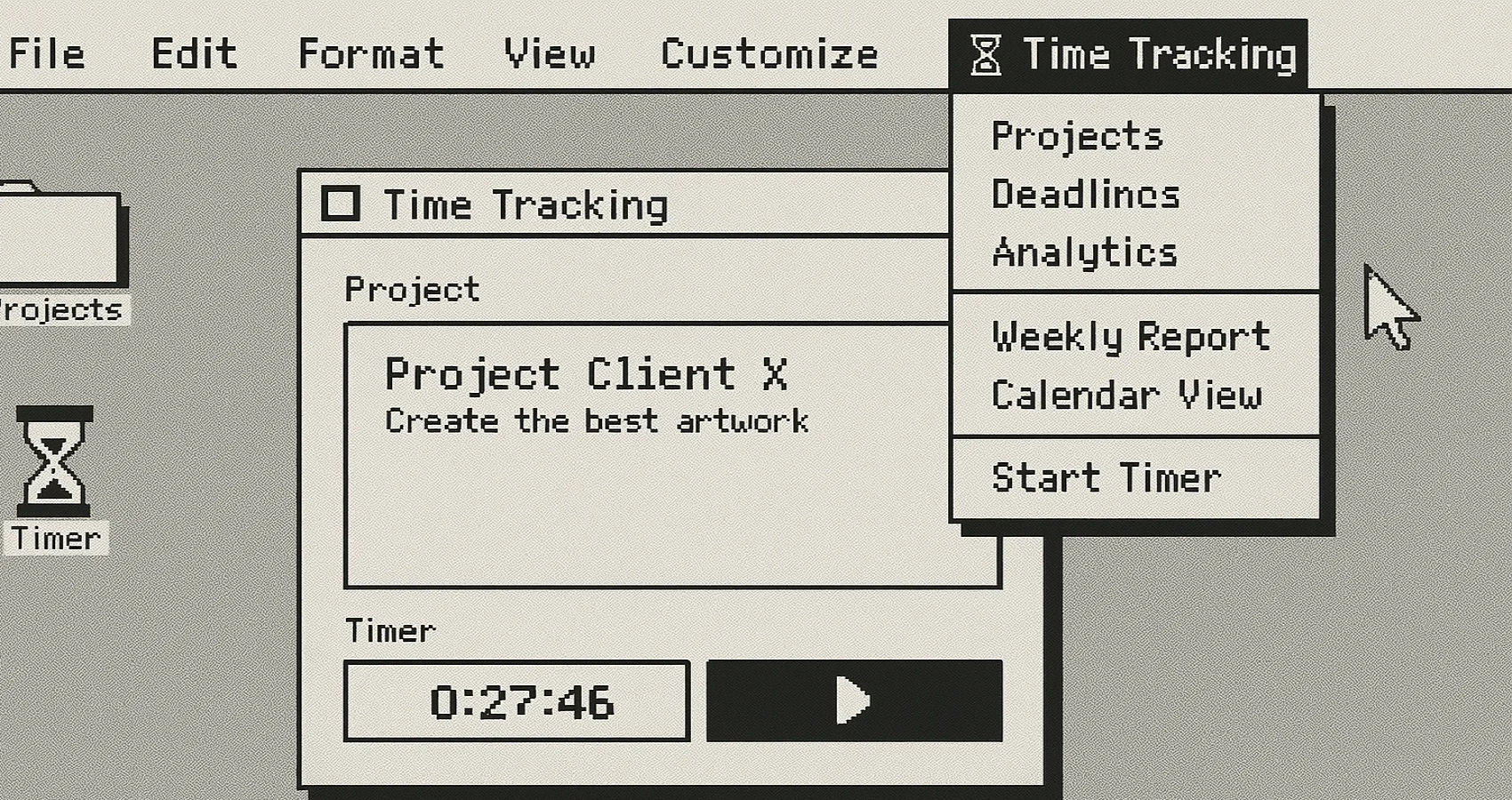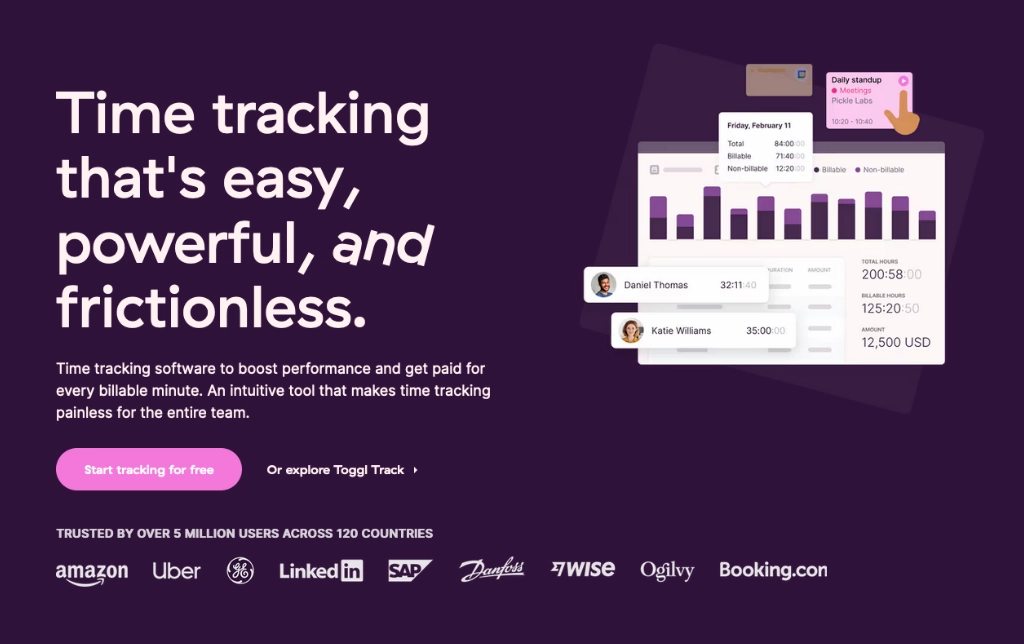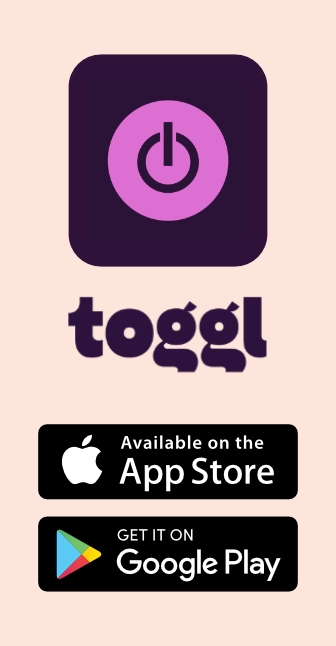Be aware of your time-spending
Let’s talk time, the one resource we all have and somehow still don’t have enough of.
Every freelancer has their own rhythm when it comes to time management. Some of it’s solid, some of it… not so much. And that’s totally fine. The key is honesty. Being real with yourself about how your hours actually go down is the first step to crafting a workflow that’s not only productive, but also enjoyable.
Now, time tracking apps often get lumped in with hourly billing. But here’s the thing, I rarely use them for that. I’m more into value-based pricing, where I charge based on the results and impact of my work, not the minutes I spend making it. Still, I swear by my time tracking app. Here’s why.
It helps me plan better (and deliver on time)
For me, the app isn’t a mere clock-watcher; it’s my reliable companion in project analysis. Knowing the exact hours invested in projects and tasks allows me to fine-tune my workflow, while at the same time providing clients with accurate delivery timelines. When it comes to clients, the more accurate your estimate, the happier they will be when the delivery date is met. This avoids a lot of communication issues and makes you a trustworthy and reliable go-to. Clients aren’t just in pursuit of quality; they seek predictability as well.
It calls me out when I’m distracted
You know that moment where a “quick” YouTube tutorial somehow turns into 25 minutes of deep-dive cinema analysis you never asked for? Yeah. That.
Tracking my time has helped me see just how easily distractions sneak in. It’s not about guilt, it’s about noticing. And once you notice, you can adjust. What you do with your time becomes a conscious decision again, not a slippery slope.
Iit helps me see what’s worth outsourcing
There are some tasks that suck up your hours and your soul. Admin, outreach, bookkeeping, you name it. When I started tracking my workday more closely, I noticed how many hours I was sinking into tasks that weren’t paying me back. That was the nudge I needed to start delegating. If it’s cheaper (and better) to pay someone else to handle something, why not?
Building the habit (yes, it takes a minute)
I’ll be honest, when I first started tracking my time, it was all over the place. I’d forget to stop the timer, or not hit start at all. But like most things, it just needed repetition. Now, it’s baked into my routine. Like brushing my teeth or making coffee. Don’t let the early awkwardness throw you off. Give it a bit of time, and you’ll get there.
My ride-or-die: Toggl
I’ve been using Toggl for over a decade now, and honestly, I have no reason to switch. It just works. It’s designed for freelancers, lean, clean, and actually enjoyable to use. As a freelancer you need functionalities, but not as many as a company with employees. Toggl strikes the perfect balance, offering simplicity paired with plentiful functionalities. Here are some standout features that make it my go-to app:
- Mobile app that doesn’t make me want to scream
- Neatly groups similar entries (goodbye duplicate chaos)
- Crystal-clear visual reports by project, client, or tag
- Friendly reminders if I accidentally let a timer run for 8 hours
- Weekly email summaries (like a time-based check-in with myself)
- Smart shortcuts and keyboard hacks for faster logging
- Customisation without overcomplication
- And it actually looks nice on screen (yes, aesthetics matter)
They also have a built-in project planning tool that uses Kanban-style boards. I’ve got mine set up per client, and it’s a dream for tracking deadlines and to-dos. It syncs beautifully with the time tracker, making the whole thing feel cohesive rather than chaotic.
And hey, it’s free (well, sort of). Like many modern apps, Toggl trades on a data-for-use model. So before you go all in, check how they use your data and decide if you’re cool with it.
Your private life deserves records too
We talk about tracking time like it only belongs to our work hours, but what about the rest of life? How much time do you spend cleaning, scrolling, working out, or endlessly planning a trip that never actually happens? Tracking your time, even loosely, can reveal where your energy really goes. And once you know that, you can get intentional about how you want to spend it.
There’s a beautiful Italian phrase, la dolce far niente, the sweetness of doing nothing. And I’m all for that. But there’s a difference between conscious stillness and mindless time-wasting. One nourishes you. The other leaves you feeling drained.
I recommend checking out Laura Vanderkam’s TEDx talk on this. She nails the point: time is elastic, and you can shape it around the life you want—if you’re willing to get a little strategic.
Conclusion
Now, I’m not suggesting you morph into a clock-watching automaton, meticulously tracking seconds like a time-travel enthusiast. But why not sprinkle some smart tools into your life mix? It’s not about becoming a Silicon Valley cyborg, but using nifty strategies and a time tracking app to beat stress and rule your day. Whether it’s managing household chores, engaging in physical exercise, or setting aside time for non-work-related learning, these activities consume time. Yet, the prospect becomes less overwhelming when you master the art of handling and utilising your time wisely. And in a world that constantly wants to steal your attention, that’s kind of priceless, don’t you think?
I only recommend what’s worth your time. Some links may earn me a commission, at no extra cost to you.


